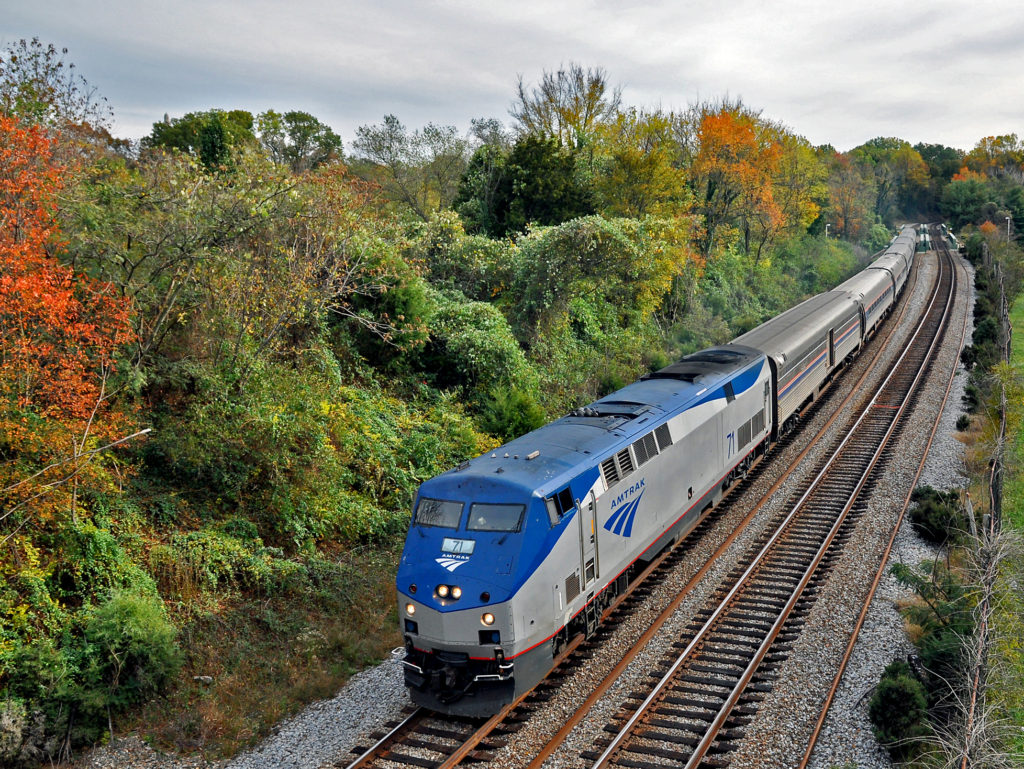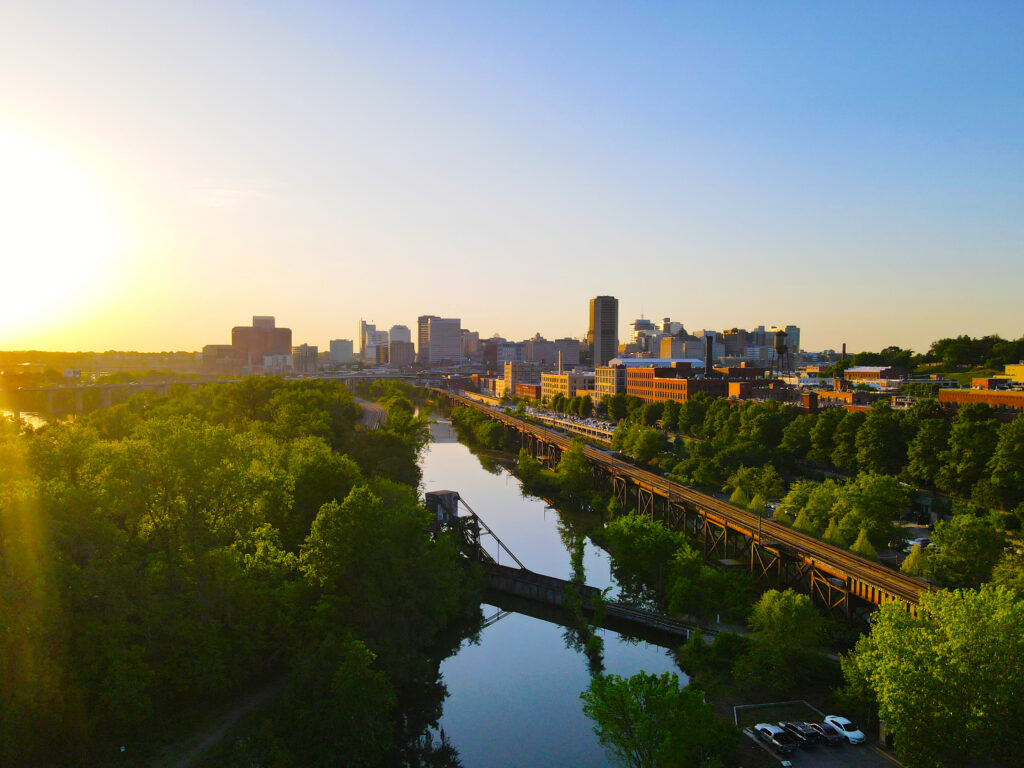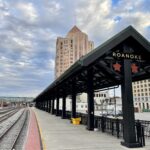Full Steam Ahead: Expanding Passenger Rail Service Across the State

Compelling energy, economic, and environmental benefits flow from maximizing the use of rail to move both people and goods. Photo of Virginia’s Amtrak Regional Train Rail by Doug Riddell.
On October 26, Gov. Glenn Youngkin expressed his full support for the Commonwealth Corridor, an east-west railway that would be a gamechanger in connecting Virginia’s people and resources.
Spanning across the entire state, this east-west railway would speed rail travel and slash travel time from western Virginia to Hampton Roads.
Currently, rail only runs north-south, adding excessive amounts of travel time for passengers seeking to travel east-west. With the implementation of the Commonwealth Corridor, it would only be about a seven-hour trip from Blacksburg to the beach! The railway will connect stops in Blacksburg, Roanoke, Charlottesville, Richmond, Williamsburg, and Hampton Roads.
The Benefits & Challenges of Expanding Passenger Rail
According to a 2018 report released by Virginians for High Speed Rail, the Southern Environmental Law Center, Virginia21, and both the Hampton Roads and Roanoke Regional Chambers of Commerce, there are many benefits of expanding passenger rail services across the state.
- Increasing job opportunities, work productivity, and tax revenue.
- Reducing road traffic by taking over 1,500 gas-powered cars off the road.
- Cutting fuel consumption by nearly 800,000 gallons of gasoline, decreasing carbon pollution by 15 million pounds (the amount created from 5,375 gas-powered cars in only one year!).
- Connecting 65% of Virginia’s colleges and universities directly with each other.
- Bolstering accessibility and tourism.
As one of the top-10 largest investments in rail in the last few decades, there are potential hurdles in construction costs along the way. Virginia’s resources and capacity beyond 2030 are currently uncertain. Every federal dollar Virginia receives will open up more state dollars that can be used on the railway.
Thus, in order to ensure the full implementation of the Commonwealth Corridor, the state needs to receive as much federal funding as possible—as soon as possible.
Policy Recommendations & Solutions for Expanding Virginia’s Railways

Virginia has made significant progress on passenger rail in recent years, but increased funding is needed to improve the speed, frequency, and reliability of service; extend service to new areas; modernize stations; and improve multimodal connections to them. Photo of the Virginia Capital Trail by Andre Eanes.
The Virginia Passenger Rail Authority (VPRA) has dozens of projects under its ambitious $3.7 billion Transforming Rail in Virginia initiative. For the Commonwealth Corridor to join them and receive stable, consistent funding, it must be officially adopted into the Statewide Rail Plan that will be finished later this year.
Furthermore, President Biden’s federal infrastructure bill allocated $66 billion to passenger rail across America. We could expect the Commonwealth Corridor to reach completion sometime in the 2030s if the project receives $2 billion of those funds. However, if the project is waiting on state dollars, it may not be done until 2040. The state needs to push for increased federal funding as soon as possible.
From our Expanding Rail policy paper, here are specific policy solutions to secure the expansion and modernization of not only the Commonwealth Corridor, but all of our ongoing railways.
- Protect rail funding and implement the Transforming Rail in Virginia program.
- Secure the inclusion of the Commonwealth Corridor (New River Valley – Charlottesville – Richmond – Hampton Roads) study into the Virginia Statewide Rail Plan.
- Modernize rail stations and provide multimodal connections between stations and activity centers.
- Authorize a state study of opportunities to expedite the transition to zero-emissions trains and infrastructure.
- Fund a rigorous study of the economic and environmental life-cycle costs and benefits of adding new freight capacity on rail vs. on the highway in the I-81 Corridor.
- Protect any potentially abandoned rail corridors through public purchase for future service, rails with trails, and/or other transportation uses.
Thank you to our Network Partners at Virginians for High Speed Rail and the Southern Environmental Law Center for providing expertise on these policy solutions. If you’d like to see more, make sure to check out Our Common Agenda Environmental Briefing Book.



